Calling Balls/Strikes from Behind the Mound? Follow an Easy Safety Tip
Jun 6th, 2020WHAT THIS ARTICLE IS NOT: This article is not a recommendation for umpires to call balls and strikes from behind-the-mound, nor is it a recommendation for a 1-man system. It is for those who are doing so in any system.
STAYING SAFE ANNOUNCEMENT from line drives if required and willing to work behind the mound.
BacK OFF FROM THE MOUND
Brent Rice who is in charge of officials at the MHSAA (Michigan) and former administrator and instructor at the Wendlestedt Umpire School shared this on an “Umpiring through COVID” Zoom call with the American Sports Officials, Inc.
(Paraphrasing) Distance is not as important as angle. You can get farther back from the mound and still be just as effective calling balls and strikes than if you were hugging the mound.

In other words, find the distance behind the mound that works best for you from both an accuracy and safety standpoint. Backing off helps give you more time to react to a line drive.
specific Recommendations
John Gallante, President & Assignor of Tri-State Elite Umpire Association, outlines specific recommendations in a 2-man system based on Brent's guidance:
"To adhere to social distancing guidelines, we want to best prepare our umpires for any possible scenario.
If that includes calling balls and strikes behind the mound, I would recommend 10-12 feet back when we have a potential steal of 3rd base. Otherwise, I would prefer our umpires 2-3 steps deeper.

The position should change slightly based on age, mobility, etc."
John provides a great mindset for social distancing in this article.
Related Articles
- Proper Positioning for Throat Guards on Umpire Helmets
- Jim Goes Parental with Umpire Cap & Bill Length Warning on Umpire-Empire Post
- Why the NOCSAE Standard Doesn't Help Umpires / Follow These 5 Steps Instead
- Watch Jim Kirk’s Webinar on ‘Uniform & Safety’ for British Baseball Federation & European Umpires
- Injury Prevention & Recovery: The Essential Umpire Safety PSAs
- Smitty Making Cloth Masks - Buy One, Donate One Program
- FROM THE ASHES: How Thomas Edison Inspired Our Company to Survive the 2020 Sports Shutdown
- Social Distancing Behind Home Plate: Could This Solution Provide the Best Compromise for Umpires, Leagues & Safety?
About the Author
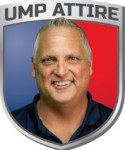
President Jim Kirk
Jim is a leading expert, educator and author on umpire gear, safety & appearance. After playing baseball at Centre College, he worked as a high school umpire. He became involved in E-Commerce while working on an MBA in the early 2000s and bought Ump-Attire.com in 2006, He eventually led it to the leading umpire gear & attire retailer worldwide, a “Best Places to Work in Louisville” honor in 2020, 2021, 2024, and a National Association of Sports Officials (NASO) Preferred Vendor. He maintained a long-standing relationship with Minor League Baseball Umpire Development & Training Academy for 10 years. He serves as an adviser to UMPS CARE Charities, the charity of MLB umpires, served as a 2-term board of director from 2012-2018, and was named their 2015 Ambassador Award recipient. A supporter since the inception of the Wounded Warrior Umpire Academy, he was named to their Board of Directors in 2020.

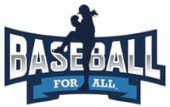

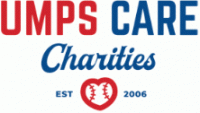

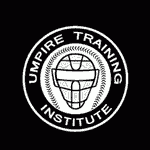




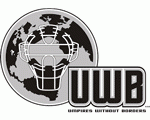
Comments
Great article Jim. I have umpired this way recently because of a COVID-19 protocol and I am comfortable in either position. When I am behind the plate, I am OK with just a mask because I think the place I stand is at a safe angle. Of course the first time I get hit I'll probably change my mind.
- Comment by Richard Critelli
- Jan 5, 2021
ReplyJim, Thank you for this article but you did not address the plate umpire. He is shown behind the batter but we all know there is no safe place, even at the batter's off side. We have to have an umpire there for fair/foul, plays at the plate, etc. It would seem the best protection would be a mask and an outside chest protector. As soon as the ball is hit the protector can be cast aside if necessary and the umpire can move rapidly into position. Might be a good idea for the field umpire as well. Focusing on the pitch can delay reaction to a line drive by a couple of 1/10 of a second -- and that's all it takes for the ball to grow larger, as we've all seen it do.
- Comment by Peyton Coffin
- Jun 12, 2020
Reply